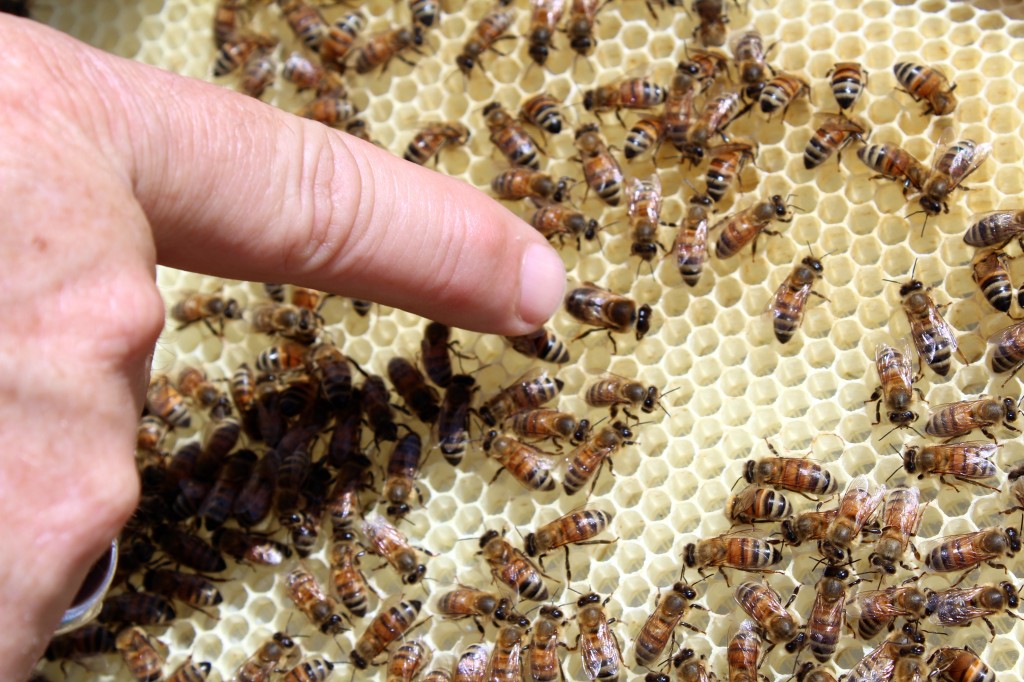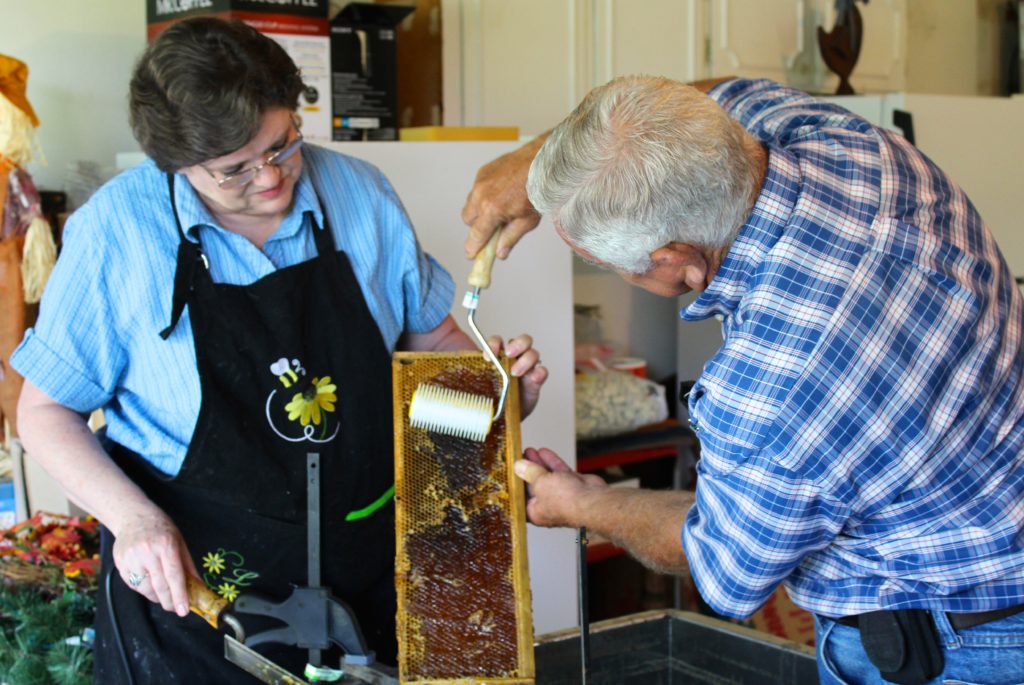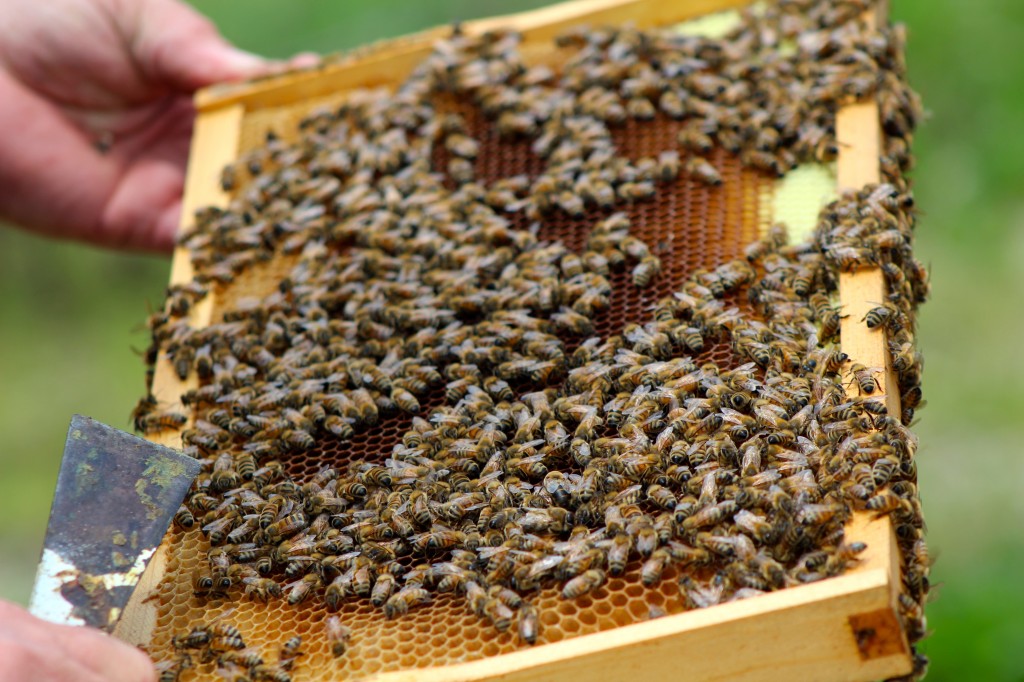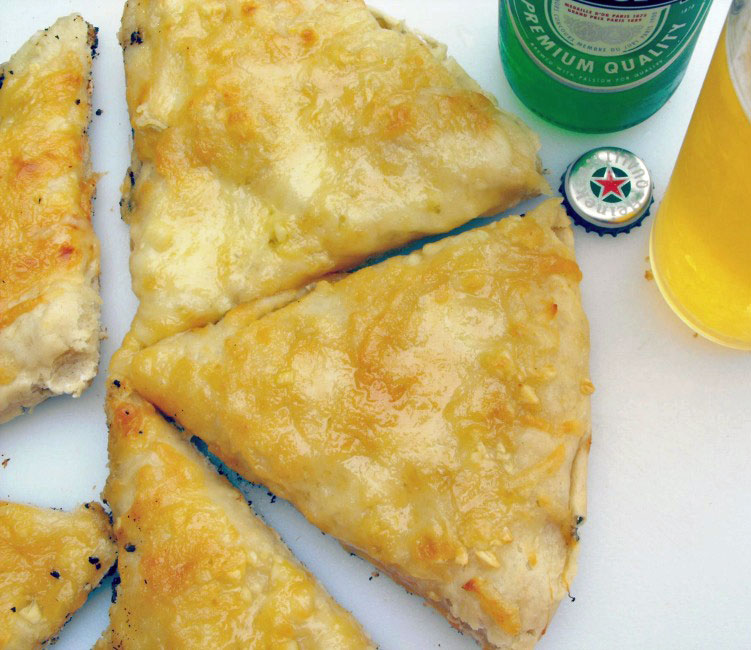
“Want to see a bee sting me?”
This is and isn’t a serious question. Beekeeper and farmer James Rhein of Mountain Home is rarely serious and he loves nothing more than telling jokes and amusing stories. However, he is not kidding about having a bee sting him in order to illustrate a point.
“I’ve been stung so often I’m immune to bee venom,” Rhein says. “In fact, I let the bees sting my hands to ward off arthritis. I used to have it real bad. Now it’s gone.”
When the jovial 72-year-old isn’t kidding around, he’s rattling off fascinating facts about America’s favorite pollinators.
“The average bee hive contains 50,000 to 60,000 worker bees, 200 to 500 drone bees and one queen,” Rhein told us recently when we visited Baxter County to see his hives. “The average life span of a worker bee is only six weeks, but a queen in the wild might live five to six years. During warm months, the queen lays 1,000 to 2,000 eggs each day.”
He droned on about bees (pun intended), sharing a passion for these important insects that developed almost 40 years ago.
“It started with a friend who kept honeybees,” he says. “He kept telling me I should get bees, too, and when I did, I got really interested in them. Unfortunately, back then, there were few local beekeepers, no beekeeping clubs and no beekeeping classes, so I had to teach myself about bees by reading books and through trial and error.”
 Learning beekeeping on his own inspired Rhein to teach others, and now he conducts five beekeeping classes annually – a service for which he never charges – and he answers calls daily from people needing beekeeping assistance. He does all this while keeping 40 to 50 bee hives himself and taking an active role in his church, the local Farm Bureau and other organizations. He served seven years as president of the Arkansas Beekeepers Association, 11 years as president of Baxter County Farm Bureau and 10 years as a state board member for Arkansas Farm Bureau.
Learning beekeeping on his own inspired Rhein to teach others, and now he conducts five beekeeping classes annually – a service for which he never charges – and he answers calls daily from people needing beekeeping assistance. He does all this while keeping 40 to 50 bee hives himself and taking an active role in his church, the local Farm Bureau and other organizations. He served seven years as president of the Arkansas Beekeepers Association, 11 years as president of Baxter County Farm Bureau and 10 years as a state board member for Arkansas Farm Bureau.
“People call me from all over the state for advice,” he says. “They don’t always understand what’s going on with their bees, and they need a source to go to. I think the best information is from a beekeeper, not on the Internet. So I help them all as best I can.”
Naturally, extracting fresh honey is a key part of Rhein’s beekeeping efforts, and he happily explains each step, from using a heated knife to remove wax caps from honey cells to spinning frames in an extractor to remove the rich raw honey. Just one of Rhein’s hives produces about 3 gallons of honey, which he and his wife package under the name “Rhein’s Golden Treasure.”

“We don’t sell our honey from a roadside stand or farmers market,” James says. “We sell mostly to people who have bought honey from us for years. We have no trouble selling all we can produce — hundreds of quarts each year.”
Rhein maintains his hives in Mountain Home, but in summer, many are moved to crop fields in Delta counties where the bees help pollinate everything from pumpkins to cotton and soybeans.
“Everyone knows bees are important, because they give us honey,” he says. “But many don’t realize bees’ primary importance is pollination. Without pollination, we wouldn’t have a third of the food we have today. Many plants can’t reproduce without pollination, and while there are other pollinators out there, too, honeybees are the best. If we were to lose our honeybees, we’d lose much of our food and fiber, everything from soybeans and cotton to fruits and vegetables like blackberries, blueberries, squash and tomatoes. We’d even have to do without pickles, because bees pollinate the cucumbers we use to make them.”
“With problems like colony collapse disorder and habitat loss, we need more bees,” Rhein says. “Ironically, there’s this big interest in bees now, because they’re disappearing. More and more people want to have bees, even though they may never rob the hives of honey, because they want to help. And I want to help them be successful.”
The Bee Facts from the Bee Man
- Honeybees aren’t native to North America. They were brought to the United States by Europeans hundreds of years ago.
- There’s a market for everything in a bee hive: honey, wax, pollen, royal jelly, propolis (bee glue), bee venom, bees, queens and more.
- Queen bees cannot feed or clean themselves. Other bees do that for her. A queen cannot live without other bees. And worker bees cannot live without a queen.
- Bees are the only insects that make food humans can eat.
- Honey is the only food that never spoils.
- Male drone bees can’t sting. Female worker bees can sting only once, and then die. Only the queen bee can sting more than once, even though she rarely does.

Honey Garlic Pizza
by Arkansas Women Bloggers member Gina Knuppenburg of Desperately Seeking Gina
Ingredients:
For the dough:
- 3 cups flour, divided.
- 1 package Pizza Crust Yeast (or rapid rise yeast)
- 1 tsp. salt
- 1 tsp. sugar
- 1 cup warm water (110 degrees)
- 1 tbsp. olive oil
- For the topping:
- 1/4 cup olive oil (or more as desired)
- 4-6 cloves garlic, pressed
- 1 tsp. kosher salt
- 1 lb. whole-milk mozzarella, shredded
- 2-3 tbsp. honey
Preheat oven to 350 degrees. Grease a 17 inch cookie sheet.
To prepare dough:
- Add two cups flour to a medium sized bowl. Add yeast, salt, sugar. Whisk to combine. Add one tablespoon olive oil to the warm water. Pour into flour mixture, stirring to combine. Dough will be wet. Slowly incorporate third cup of flour until dough forms a ball. Dump onto a floured surface and knead in as much flour as needed to make the dough less sticky and more elastic, about five minutes.
- Press dough into prepared cookie sheet. Do not press all the way to the edge; leave a 1/4-inch border around pizza dough.
For the topping:
- Drizzle olive oil over dough. Tilt pan to cover thoroughly. Add pressed garlic.
- Using the back of a spoon, spread the garlic into a thin layer over entire pizza dough. Sprinkle
- with kosher salt.
- Add shredded mozzarella, cover entire dough all the way to the edge. Drizzle honey over the
- cheese.
- Bake for 20-22 minutes until honey and cheese are bubbly and golden
